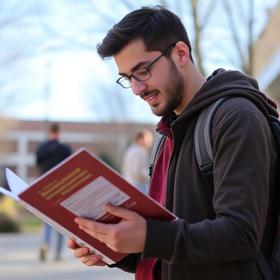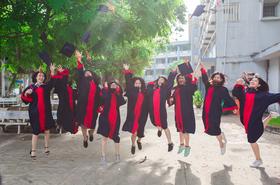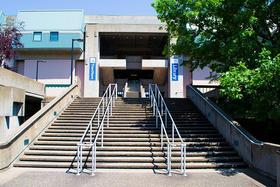- Cape Cod Community College delivers educational programs and services to meet the diverse needs of the residents of Cape Cod, the Islands, and adjacent areas of Southeastern Massachusetts. As the sole comprehensive college on Cape Cod, it provides the only access to higher education for many residents.
School Highlights
Cape Cod Community College serves 3,490 students (24% of students are full-time).
The college's student-teacher ratio of 11:1 is lower than the state community college average of 12:1.
Minority enrollment is 33% of the student body (majority Hispanic and Black), which is less than the state average of 57%.
Quick Facts (2025-26)
- Enrollment: 3,490 students
- In-state tuition: $4,212
- Out-state tuition: $9,136
- Student-teacher ratio: 11:1
- Minority enrollment: 33%
- Source: Integrated Postsecondary Education Data System (IPEDS)
School Overview
The teacher population of 315 teachers has stayed relatively flat over five years.
Cape Cod Community College
(MA) Community College Avg.
Carnegie Classification
Associate's Colleges: Mixed Transfer/Career & Technical-Mixed Traditional/Nontraditional
Associate's Colleges: Mixed Transfer/Career & Technical-Mixed Traditional/Nontraditional
Institution Level
Less than 2 yrs
At least 2 but less than 4 years
Institution Control
Public
Public
Total Faculty
315 staff
290 staff
Student Body
The student population of Cape Cod Community College has grown by 20% over five years.
The student-teacher ratio of 11:1 has increased from 9:1 over five years.
The Cape Cod Community College diversity score of 0.53 is less than the state average of 0.74. The school's diversity has stayed relatively flat over five years.
Total Enrollment
3,490 students
2,687 students
Student-Teacher Ratio
11:1
12:1
# Full-Time Students
824 students
1,039 students
# Part-Time Students
2,666 students
1,648 students
# Enrollment Undergraduate
349 students
278 students
# Full-Time Undergraduate Students
824 students
839 students
# Full-Time Graduate Students
n/a
217 students
# Part-Time Undergraduate Students
n/a
1,619 students
# Part-Time Graduate Students
n/a
346 students
Total Dormitory Capacity
n/a
400 students
% American Indian/Alaskan
n/a
n/a
% Asian
2%
6%
% Hispanic
11%
21%
% Black
9%
15%
% White
67%
43%
% Hawaiian
n/a
1%
% Two or more races
5%
3%
% Non Resident races
n/a
2%
% Unknown races
4%
9%
Diversity Score
0.53
0.74
College Completion Rate (Students who graduate in less than 4 years)
23%
21%
College Completion Rate (Students who graduate in 4 years or more than 4 years)
n/a
45%
Average Graduate Earnings (10 Years)
$34,300
$35,500
Tuition and Acceptance Rate
The public in-state tuition of $4,212 is less than the state average of $4,424. The in-state tuition has declined by 21% over four years.
The public out-state tuition of $9,136 is less than the state average of $9,401. The out-state tuition has declined by 11% over four years.
In-State Tuition Fees
$4,212
$4,424
Out-State Tuition Fees
$9,136
$9,401
Tuition Notes
*Full Time Tuition a
% Students Receiving Some Financial Aid
69%
87%
Median Debt for Graduates
$11,249
$11,249
Median Debt for Dropouts
$5,498
$5,500
Acceptance Rate
n/a
75%
SAT Reading
n/a
540
SAT Math
n/a
535
SAT Writing
n/a
480
ACT Composite
n/a
21
Source: 2024 (or latest year available) Integrated Postsecondary Education Data System (IPEDS)
School Notes
- The College is a student-centered learning community that prepares students for a rapidly changing and socially diverse global economy. To this end, it provides degrees in the liberal arts and sciences; career and technical degrees and certificates; and workforce education. A strong liberal arts focus contributes (1) a foundation for transfer to a baccalaureate programs; (2) general education that supports technical and career programs with communication and analytical competencies as well as broadly based liberal education; and (3) cultural opportunities for the region. Cape Cod Community College was established in 1961, the second institution to open as part of what is now a 15 community college system in Massachusetts that resulted from the persistent efforts of Senator Edward Carleton Stone. Outgrowing its first home, in 1970 Cape Cod Community College moved to its current location on 116 acres in West Barnstable, making it the first community college in the state to build a new campus. Under the direction of its second president, E. Carleton Nickerson, the College moved into five of the eight buildings designated in the master plan for the new campus. With all eight buildings completed by 1974, the structural space on campus totaled 300,249 square feet. Today, the campus consists of 116 acres and 9 buildings, totaling 305,494 square feet. Cape Cod Community College is accredited by the New England Association of Schools and Colleges, Inc., through its Commission on Institutions of Higher Education.
- Sample of notable school alumni/alumnae:
- Kenard Smith, Culinary and Fashion Designer -
- Jordan DeSilva, Social Media Manager at Coxswain Media -
Frequently Asked Questions
How much does Cape Cod Community College cost?
Cape Cod Community College's tuition is approximately $4,212 for In-State students and $9,136 for Out-State students.
Who are famous alumni from Cape Cod Community College?
Cape Cod Community College famous alumni include: Kenard Smith, Culinary and Fashion Designer and Jordan DeSilva, Social Media Manager at Coxswain Media.
Recent Articles

How to Transfer from Community College to a Four-Year University in 2025
A step-by-step guide for community college students transferring to a four-year university in 2025 — updated strategies, data and expert insights.

Scholarships for Community College Students 2025
Explore updated scholarship programs, tuition data, and expert strategies for community college students in 2025.

The Rise of Technical and Vocational Training in 2025
Explore the 2025 surge in technical and vocational training—enrollment, policy, costs, and why this path is gaining ground for students and parents.









